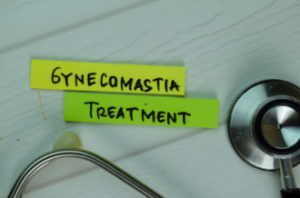Gynecomastia surgery is performed to reduce or eliminate excess male breast tissue that has been developed due to obesity, puberty or menopause. A breast reduction is made by making a small incision along the chest wall, or via an implant-supported incision in the armpit. The incision is often made under the breast at the areola (the pink area). Excess tissue is then removed via this incision, and the skin and fat are thus removed.
Gynecomastia Adelaide surgery can provide a patient with new self-esteem and improved social life. The size of the male breasts can be adjusted over time. It takes one year to achieve a balanced physique for most patients, resulting from minimal exercise and a high intake of fatty and sugary foods. For those who wish to remove the unsightly male breasts, gynecomastia plastic surgery is an option.
If you have been trying to deal with your gynecomastia Adelaide problems, you know how difficult it can be to get rid of them. If you choose not to go through with the surgical excision, the fatty deposits in the breast gland tissue will cause you problems like old age sets in. It would help if you took action now.
 Before having male breast reduction surgery, ask your gynecomastia Adelaide surgeon about the complications that can arise from the procedure. While a majority of patients report little to no complications, some may experience:
Before having male breast reduction surgery, ask your gynecomastia Adelaide surgeon about the complications that can arise from the procedure. While a majority of patients report little to no complications, some may experience:
- Your surgeon will inform you of all potential complications associated with the procedure. This will include the risk involved with the process and the possible aftercare protocol you need to follow. You will also need to be made aware of any medications or over the counter medications that may be contraindicated for the surgery. Typically, patients are advised to stop taking certain medications up to three months before the surgery. Be sure to check with your doctor and follow his or her recommendations to ensure proper recovery.
- During the first two weeks after the surgery, there will be swelling and redness associated with the incision. Within two weeks, as long as everything progresses appropriately, you will begin to see the results. You will be able to return to work two weeks after your surgeon tells you to and you will notice that your face is noticeably more smooth and toned.
- After the second week, you will be able to return to exercise and other regular activities. Two to four weeks after your liposuction procedure, your incision will be healed. To maintain a flat abdomen, you will need to continue with your exercise routine. This will help your body to adjust to your new shape. You should be able to return to gynecomastia-free activities within six weeks after your surgical procedures.
- After three weeks and after six weeks, it is doubtful that your scarring will be visible. If you have a scar, the plastic surgeon will either remove it using laser surgery or dermabrasion. If your blemishes are minor, both procedures will be able to give you a satisfactory result. Scarring will also decrease in the months and years to come, so you can look forward to seeing the remaining scarred area on your stomach in a few years. The final result of your surgery will most likely resemble a pear.